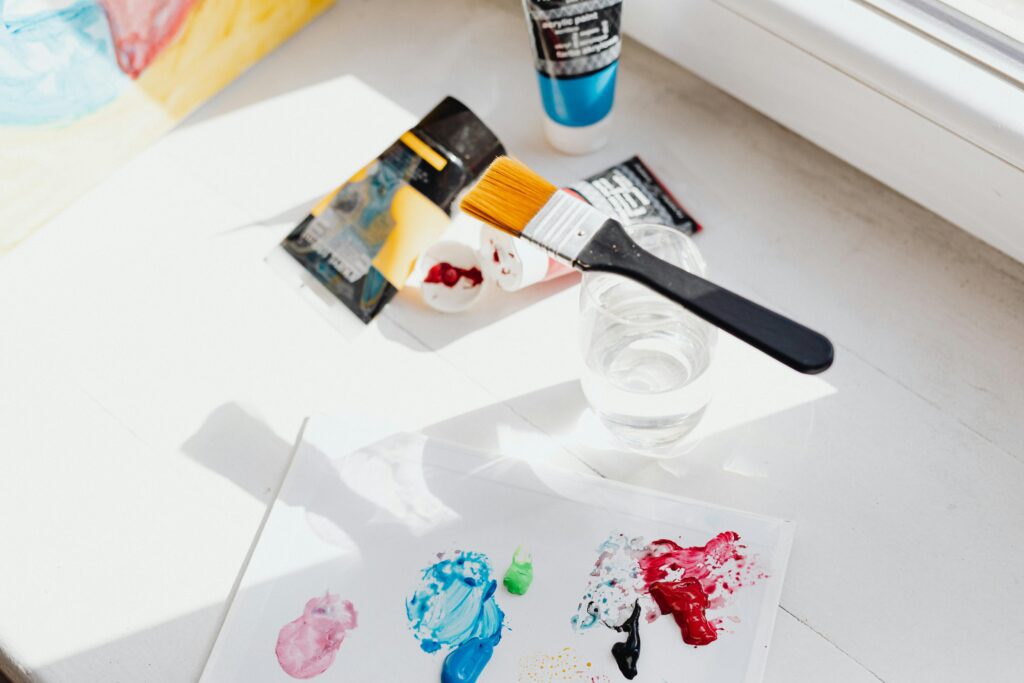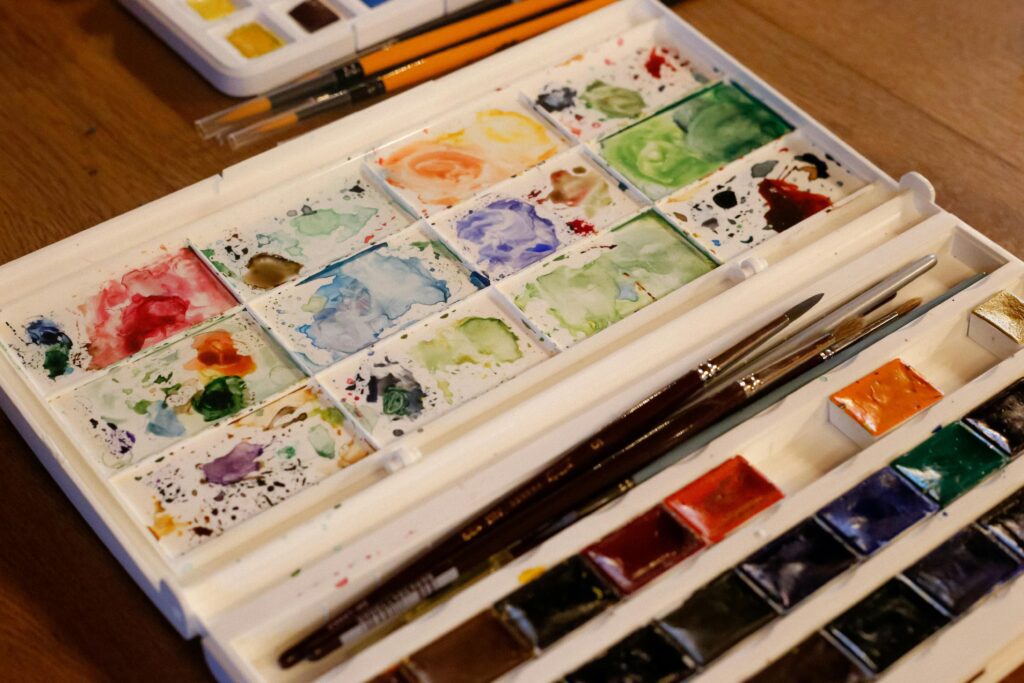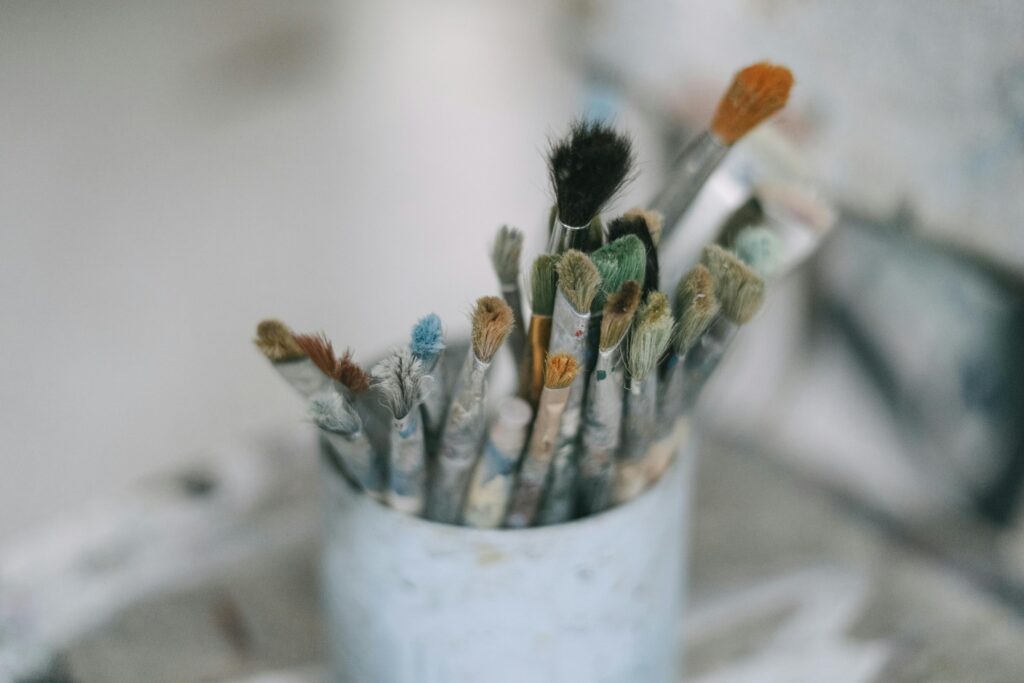First Sale vs. Resale: What Every Artist Should Know

At some point in your art journey, your work finally leaves the studio. Maybe it’s wrapped up for a show, maybe it’s headed to a collector who found you online, or maybe it’s just your first sale ever. It feels good, right? But here’s the part most artists don’t really think about , that sale is just the beginning of your artwork’s story. What happens next, who resells it, and how its price changes over time, that’s where the art world starts to get interesting.
There are basically two worlds your art can live in: the primary market and the secondary market. The primary market is that first sale, when your piece leaves your hands for the first time. The secondary market is when that same piece finds a new home, maybe years later, through a resale, gallery, or auction. One is about introducing your work to the world, and the other is about how that work starts to hold or grow in value over time. Both matter more than most artists realize.
For women artists, that second part , the resale world , can feel like a locked door. Even though women make up nearly half of art school graduates, only a small fraction of those names show up in secondary market data. The gap isn’t about quality or creativity. It’s about how networks, visibility, and pricing patterns are still catching up.
But here’s the empowering part: once you understand how these two markets actually work, you start seeing your sales differently. You stop feeling like each one disappears into the void, and you begin to notice patterns , which pieces sell fastest, where they go, who buys them, and what that says about your next move.
So this isn’t about turning into a market expert overnight. It’s about seeing your art’s full life cycle , from that first “sold” to its next collector , and realizing that your career doesn’t end at the first sale. It just starts to get really interesting after it.

Your First Sale Isn’t Just a Sale , It’s a Record
That first red dot on your wall? It’s more than a win. It’s data. The moment your work sells, that price, collector, and context become the foundation of your market history. Collectors, curators, and even future galleries will look back at that number like an anchor. If it’s too low, it can hold you down. If it’s too random, it confuses your trajectory. That’s why your first few sales matter more than you think.
Pricing early works can be tricky. You want them to move, but you also want to protect your long-term value. Too many artists underprice because they’re eager to get started or afraid of scaring people off. But your primary market sets expectations , not just for buyers, but for you. If your first painting sells for $300, it’s harder to justify $3,000 next year unless your career visibly expands in scale, exposure, or collector interest.
That doesn’t mean you should price yourself out of the room either. A healthy starting point comes from context. Who’s buying your work? What kind of audience are you reaching? Are your peers in similar shows or communities pricing in the same range? Research isn’t just for galleries , it’s your best defense against underselling.
Many artists find it useful to keep a private record of their first ten sales , who bought, how much, where, and what size the work was. Over time, patterns emerge: what sells quickly, what sits longer, what format collectors return for. Those notes become your own personal market study, and they’ll serve you far better than any pricing app or advice column.
Think of it like planting your first seeds. You’re not just growing income, you’re building credibility. And the more mindful you are about those first steps, the stronger your foundation will be when you eventually step into the secondary market.
Why Resales Feel Like a Club You’re Not Invited To
Let’s be honest , hearing that one of your peers’ works just sold at auction can sting a little. You’re happy for them, but you also wonder, how did they even get there? The truth is, the secondary market has always operated like a small, private club. Not because artists aren’t talented enough to enter, but because access depends on who knows how to open the door.
The resale world runs on reputation and relationships. Galleries, collectors, and advisors play a huge role in deciding whose work gets reintroduced into circulation. If your pieces are mostly sold directly to buyers through Instagram, it’s harder to track provenance , which makes it tougher for your work to qualify for secondary listings later. That’s not a reason to stop selling independently, but it’s worth understanding the trade-off.
For women artists especially, resales can be elusive simply because their early collectors are less likely to flip work for profit. Studies show that collectors of female artists often buy for personal connection, not speculation , which means fewer resales in traditional auction systems. Ironically, that sincerity is beautiful, but it also limits exposure in the secondary sphere.
So how do you bridge that? Visibility helps. Submitting to curated platforms, getting featured in group shows, or even creating well-documented certificates of authenticity for each work all make a difference. You’re building traceability , a breadcrumb trail that shows where your art has traveled.
The secondary market might look like a closed loop, but it’s really just a chain of information and relationships. The more you invest in documenting and sharing your work’s journey, the easier it becomes for that work to reappear later in spaces that can amplify its value.
Collectors Love Context More Than They Love Price Tags
Most artists assume buyers care about price first. But seasoned collectors often look for something else entirely , context. Who showed this artist’s work? Where did it sell? Has it been written about or exhibited? These details tell a story, and stories add weight to numbers.
The best way to give your work context is to make its journey easy to follow. If you’re selling independently, don’t just ship and forget. Keep your buyers looped in. Share updates when your work is exhibited or featured somewhere. You’d be surprised how many collectors become repeat buyers simply because they feel part of your art’s evolution.
Many artists underestimate the value of presentation. A clean portfolio, a digital catalog, or even a one-page PDF that lists your available works can change how collectors perceive your professionalism. It signals that you understand your work isn’t just an image, it’s an asset.
And that’s where something like the Art Catalogue Template from the Arts to Hearts Project shop fits beautifully. It helps you create a polished, branded catalog of your works , perfect for emailing to collectors, galleries, or even art fairs. Placing this link right after this section would feel natural, since we’re talking about presentation and context.
Collectors don’t just buy artwork, they buy a narrative they can retell. The more you control that narrative early on, the more powerfully your primary sales feed into your future market value.
The Smart Artist’s “Market Tracker” Habit
Here’s a little secret most artists overlook: the best way to understand your place in the market is to track it. Not obsessively, but consistently. A simple spreadsheet (or even a notebook) where you note dates, prices, buyers, and exhibition details can be one of the most valuable tools in your career.
Why? Because markets shift. What sells quickly this year might stall the next. If you track your sales patterns, you’ll notice trends that can guide your decisions. Maybe small works move faster. Maybe collectors prefer a specific medium. Over time, you stop guessing and start seeing what actually builds momentum.
A few columns can tell you a lot: work title, size, medium, price, buyer name, sale type (direct, gallery, fair), and any resale data you can find. That’s it. It’s not about turning into an accountant, it’s about treating your practice like a long-term investment.
Artists who keep these records tend to price more confidently and negotiate smarter with galleries because they have proof of consistency. They also recognize when to raise prices , not because they “feel ready,” but because the data supports it.
Your market tracker isn’t a brag sheet, it’s a mirror. It helps you see progress even when the growth feels slow, and it reminds you that art careers aren’t built on one big moment , they’re built on a series of informed ones.

When the Market Isn’t the Measure
Let’s be clear , not every meaningful career is built through auctions or resale records. Some of the most respected artists thrive entirely within the primary market. They build loyal collectors, develop steady income streams, and keep creative control over their work. That’s power too.
Understanding how the system works doesn’t mean you have to play by every rule. It just means you make informed choices. Maybe you’ll decide to stay independent, pricing directly through your own platforms. Maybe you’ll choose to partner with a gallery that aligns with your values. The goal isn’t to chase the secondary market , it’s to create options.
Every artist defines success differently. Some care about legacy, others about sustainability, others about making work that moves people regardless of price. The healthiest approach is to view the market as a tool, not a scorecard.
When you build awareness instead of anxiety around sales, you start to approach the business side of art with curiosity instead of fear. That mindset shift alone can completely change how you navigate opportunities.
In the end, knowing how both markets operate doesn’t make you commercial , it makes you confident. And confidence, more than anything, is what turns an emerging artist into one who lasts.
Galleries Aren’t Magic Doors , They’re Partnerships
A lot of artists secretly think getting gallery representation will automatically unlock the next level , more exposure, higher prices, maybe even auction potential. But galleries aren’t magic doors, they’re business partners. And like any partnership, it only works if both sides bring something to the table.
When you’re in the primary market, galleries help introduce your work to collectors you wouldn’t reach on your own. That’s their strength. But that visibility comes with structure , commission rates, exclusivity agreements, and expectations about production. It’s not bad, it’s just business.
Before you sign anything, look at how the gallery supports artists after the first sale. Do they track provenance? Do they promote resales or build collector relationships? Some do this brilliantly, others stop once the work leaves the wall. You want the first kind.
A healthy gallery relationship is built on transparency. Ask about pricing strategy, collector communication, and whether they keep sales records accessible. It’s completely okay to ask , it shows you’re serious about your career, not just eager for validation.
A great gallery isn’t one that “discovers” you, it’s one that grows with you. And the artists who understand that early end up owning their narrative instead of being defined by it.

The Resale Ripple Effect (And How to Catch It)
Once your work enters the resale world, it moves differently. The price isn’t set by you anymore , it’s shaped by demand, rarity, and timing. That can feel weird at first, like someone else is suddenly in control of your story. But the good news is, there are ways to stay connected to that process.
Start by encouraging collectors to keep you in the loop. When your collectors resell or trade your work, ask them (nicely) to inform you or your gallery. It’s not just curiosity , it’s documentation. Knowing where your work goes helps you track visibility and influence.
Online platforms are also starting to bridge the gap. Sites like Artsy, 1stDibs, and MutualArt now offer resale listings where you can see patterns in secondary pricing. It’s not about comparison, it’s about awareness. You can learn a lot about timing, presentation, and what kind of works retain value over time.
Another smart move? Keep a small database of collectors and buyers. Include notes about who’s likely to keep vs. resell. Over time, you’ll see who your “market drivers” are , the people who naturally build momentum for your work.
The resale ripple is real, but it’s not random. It rewards consistency, documentation, and connection. If you make those habits early, your work won’t just move, it’ll echo.
Tips & Tricks: Turning Primary Sales into Long-Term Leverage
Let’s talk about strategy that actually works in real life , things artists can do now, without needing a team or insider connections.
1. Create mini provenance cards. When you sell a work, include a small signed note that documents title, year, and sale details. It looks professional and helps build future traceability.
2. Add “collectors’ notes” to your portfolio. If a work is in a private collection or has been exhibited before, mention it. That small detail adds credibility and resale potential.
3. Follow your collectors online. Not in a weird way , just stay visible. Engage when appropriate. Being top-of-mind can lead to resales, referrals, or commissions.
4. Keep prices consistent across platforms. Nothing kills collector confidence faster than seeing different numbers for the same artist.
5. Update your website annually with sold works. It signals growth, movement, and professionalism , all traits galleries and buyers look for before investing long-term.
Your art is your asset, and the more organized you are with its story, the more confidently you can navigate both markets. It’s not hustle culture , it’s smart career building.

The Emotional Side of Market Growth
No one really talks about this part: how strange it feels when your work starts selling at higher prices, or when you see it resold for more than you originally charged. It’s flattering, yes, but also weirdly destabilizing. Suddenly you’re being treated like a “marketable asset” instead of a person.
It’s normal to feel protective of your work , you poured months of yourself into it. Seeing it enter the resale world can trigger mixed feelings. That’s why it’s important to separate your creative self from your professional one. The market doesn’t define your worth, it reflects how people interact with your work at a specific moment in time.
When you stay grounded in your practice , your why, your process, your growth , you’ll ride market fluctuations with less anxiety. Remember, even established artists face ups and downs. Trends shift. What matters is your consistency and your ability to keep showing up.
It’s okay to celebrate financial wins, but don’t let them dictate creative direction. The healthiest artists keep their heart in the studio and their head in the market , never the other way around.
Learning to Speak the Language (Without Losing Yourself)
Talking about “markets” can make artists cringe. It feels sterile, like the opposite of what creativity stands for. But learning the language doesn’t make you commercial , it makes you fluent.
When you can talk confidently about primary and secondary sales, provenance, or pricing consistency, you earn respect in spaces that used to intimidate you. It’s not about faking business savvy; it’s about being informed enough to protect your work and negotiate better terms.
Think of it like learning art materials , you don’t study pigments to sell more paintings; you study them to make better ones. Same logic here. Understanding the system helps you stay creative and in control.
Start small. Read market reports from places like Art Basel or Artsy once a year. Follow a few collector newsletters. Listen to interviews with women artists who balance both art and business gracefully. You’ll start noticing patterns, language, and opportunities you didn’t see before.
Knowledge doesn’t corrupt creativity, it gives it room to grow , and more importantly, room to stay sustainable.
Playing the Long Game with Clarity
At the end of the day, the art market is just a mirror , sometimes kind, sometimes confusing, but never final. The real power lies in how you navigate it. The artists who last aren’t always the ones with the biggest openings or the fastest sales; they’re the ones who understand their own value and move with clarity.
Learning how the primary and secondary markets work doesn’t mean you need to turn into a strategist overnight. It means you stop being at the mercy of randomness. You start setting prices that make sense, building relationships that matter, and choosing opportunities that fit your goals instead of chasing whatever looks shiny.
For women artists especially, that clarity is revolutionary. It pushes back against years of being left out of resale records or undervalued in early pricing. It turns “luck” into intention.
So, next time you sell a piece, take a moment to document it. Track it, celebrate it, and see it as the start of a bigger story , one that you’re in charge of. Because in the end, understanding your market isn’t about selling out. It’s about showing up smarter.
